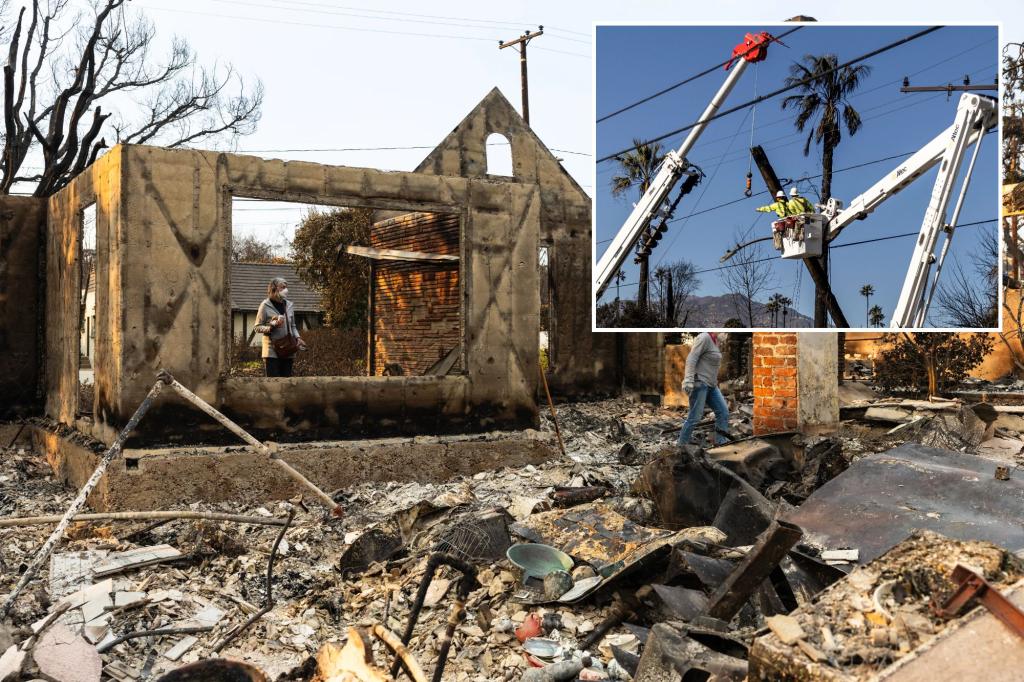The devastating wildfires that ravaged Southern California in late 2018, claiming lives, displacing thousands, and leaving a trail of destruction in their wake, became the subject of intense scrutiny and legal action. Southern California Edison (SCE), a subsidiary of Edison International, found itself at the center of a lawsuit alleging that its electrical equipment ignited the Eaton Fire, one of the major conflagrations that swept through the region. The lawsuit, filed in Los Angeles Superior Court, represented a collective of homeowners, renters, business owners, and other individuals whose properties were consumed by the flames, seeking redress for their losses. The Eaton Fire, which scorched nearly 14,117 acres in the foothills east of Los Angeles, became a grim marker in California’s history, ranking as the second most destructive inferno the state had witnessed.
The lawsuit’s central claim hinged on eyewitness accounts that placed the fire’s origin at the base of a transmission tower owned by SCE. These accounts were further corroborated by videos posted on social media, capturing the initial moments of the fire’s eruption near the tower. The legal action against SCE sent ripples through the financial markets, with Edison International’s shares plummeting nearly 12% in the immediate aftermath of the lawsuit’s filing. This marked a significant decline from the company’s stock value before the fires erupted, reflecting the potential financial implications of the legal battle and the damage to the company’s reputation. At the time the lawsuit was filed, SCE had yet to offer a public response to the allegations.
Adding another layer of complexity to the unfolding events were the safety incident reports filed by SCE concerning the Eaton Fire and another blaze, the Hurst Fire. These reports, submitted in early January 2019, documented the company’s initial findings and responses to the fires. The report pertaining to the Eaton Fire acknowledged the receipt of notices from insurance companies requesting the preservation of evidence potentially related to the fire’s origin. SCE noted that the insurance companies’ communications suggested the possibility of attributing the fire to the utility’s facilities, prompting the filing of the safety incident report. However, SCE also emphasized that at the time of the report’s filing, no official fire agency had explicitly linked the ignition of the fire to its electrical equipment.
The report regarding the Hurst Fire, filed a day after the Eaton Fire report, revealed a discovered downed conductor in the fire’s vicinity. However, SCE stated that it was unable to determine whether the damage to the conductor occurred before or after the fire ignited. This ambiguity further fueled speculation about SCE’s potential role in the fire’s origin, adding to the mounting pressure on the company. The contrasting information within the two reports, with the Eaton report acknowledging potential liability while the Hurst report lacked definitive conclusions, contributed to the complexity of the situation and the emerging legal challenges faced by SCE.
The financial repercussions of the wildfires and the ensuing legal action were substantial. Edison International’s stock price continued its downward trajectory, declining by approximately 27% since the outbreak of the fires. This significant drop reflected investor concerns about the potential financial burden of litigation, potential penalties, and the long-term impact on the company’s image. The lawsuit marked the beginning of a protracted legal battle, with the plaintiffs seeking compensation for their losses and demanding accountability from SCE for its alleged role in igniting the devastating fire. The fires themselves served as a grim reminder of the vulnerability of communities to the increasing threat of wildfires, exacerbated by climate change and other environmental factors.
The convergence of eyewitness accounts, social media documentation, and the timing of the safety incident reports created a complex narrative around the origin of the Eaton Fire. While SCE maintained that no official fire agency had definitively linked its equipment to the fire’s ignition, the mounting evidence presented in the lawsuit and the company’s own reports cast a shadow of doubt over their assertions. The lawsuit threatened to have far-reaching consequences for SCE, impacting its financial standing, its reputation within the community, and its future operations. The ongoing legal proceedings promised to delve deeper into the intricate details of the fire’s origin, potentially revealing the true extent of SCE’s involvement and the lessons to be learned from this devastating event. The fires and the subsequent legal action underscored the urgent need for increased fire prevention measures, improved infrastructure maintenance, and greater accountability from utility companies operating in fire-prone areas.










